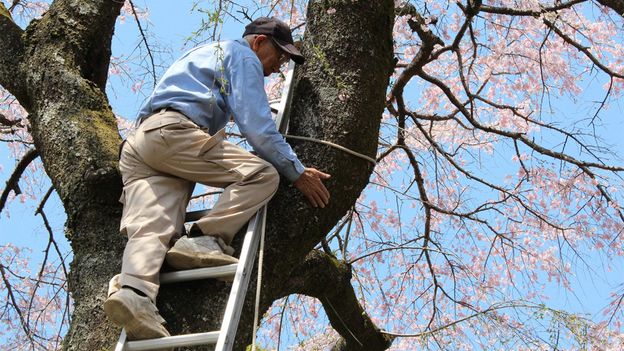- Arvind's Newsletter
- Posts
- Arvind's Newsletter
Arvind's Newsletter
Issue No1104
1.Apple aims to source all US iPhones from India in pivot away from China: Financial Times exclusive
Apple plans to shift the assembly of all US-sold iPhones to India as soon as next year, according to people familiar with the matter, as President Donald Trump’s trade war forces the tech giant to pivot away from China.
The push builds on Apple’s strategy to diversify its supply chain but goes further and faster than investors appreciate, with a goal to source from India the entirety of the more than 60mn iPhones sold annually in the US by the end of 2026. The target would mean doubling the iPhone output in India, after almost two decades in which Apple spent heavily in China to create a world-beating production line that powered its rise into a $3tn tech giant.
China, where Apple manufactures the majority of its iPhones via third parties such as Foxconn, has been subject to the US president’s most aggressive levies, though he has since signalled a willingness to negotiate with Beijing.
In the wake of Trump’s tariff announcements, which wiped $700bn from Apple’s market value, the company rushed to export available Indian-manufactured iPhones to the US to avoid the then-higher tariffs imposed on China. Apple has in recent years been steadily building capacity in India with contract manufacturers Tata Electronics and Foxconn, though it still assembles most of its smartphones in China.
iPhone assembly is the last step in the production process, bringing together hundreds of components for which Apple is still heavily reliant on Chinese suppliers.
Last year, as the iPhone maker sought to increase output from India, Foxconn and Tata started importing pre-assembled component sets from China.
2.Maruti Suzuki plans up to $1 bn capex for new EV launch, higher exports
India's top carmaker Maruti Suzuki plans to invest up to 90 billion rupees ($1 billion) in the current fiscal year, it said on Friday, as it gears up to launch its first electric vehicle, boost exports and expand its existing car plant.
Maruti, majority-owned by Japan's Suzuki Motor, will begin production of its first-ever electric vehicle, the 'e-Vitara', before September-end, Chairman R.C. Bhargava said in an earnings call.
"I think the annual production... will be somewhere near 70,000 electric vehicles, the bulk of which will be exported," Bhargava said, adding that it wants to be India's top producer of EVs this year with plans to export it to Japan and Europe.
With the 'e-Vitara,' Maruti seeks to enter a segment dominated by rival Tata Motors. EVs formed just 2.5 per cent of India's 4.3 million car sales last fiscal year but the government wants to grow this to 30 per cent by 2030 and is offering incentives to carmakers to build them locally.
The company is already India's biggest exporter of cars, and the e-Vitara key will be key to further boost its overseas shipments, which it plans to grow by 20 per cent in the current fiscal year.
3.Delhi plans to curb gasoline car sales, ban gas-guzzling bikes to shed polluter tag
India’s national capital, Delhi, is drawing up drastic plans against pollution with plans to limit the number of gasoline and diesel-powered cars that a family can buy, and a ban on fuel-guzzling motorbikes and scooters. A Reuters report said that the new electric vehicle policy will also incentivise buying hybrid or electric cars by waiving local taxes on them. Delhi is one of the most polluted cities in the world, with winters taking air pollution to hazardous levels. Delhi has been successful in switching many of its state-run buses to electric.
4.Indian aviation grows 8% in 2024-25
166 mn is the total number of domestic air passengers in India during FY25, according to data released by ICRA, a credit ratings agency. The figure marks a 7.8% year-on-year increase, with March alone clocking nearly 14.8 million fliers, up 11.3% YoY.
However, despite the growth, ICRA expects the sector to post net losses of Rs 2,000–3,000 crore in FY25 and FY26, citing sustained cost pressures, aircraft grounding due to Pratt & Whitney engine failures, and high aviation turbine fuel (ATF) prices. The outlook for FY26 remains stable, but earnings recovery is expected to be gradual due to higher operating costs
5.The CEO of Anthropic warned of the danger posed by humans’ inability to understand artificial intelligence models.
Dario Amodei wrote that a modern AI was basically a black box — “we have no idea…why it makes the choices it does”— and given how central AI platforms are becoming to the global economy and to security, it is unacceptable that we are “totally ignorant of how they work.”
Earlier Anthropic research showed that existing AIs sometimes try to deceive users. He said Anthropic wants to solve the problem by 2027. AI already facilitates scientific work: Aeon noted that in future, humans may be unable to understand the process or results of that work.
6.Gold’s record-setting rally is making ever-larger waves in China by stoking retail demand, fanning unprecedented trading volumes on the Shanghai exchange and drawing warnings from the authorities.
As prices gyrate, there have been signs of a ferocious spike in day trading, and record moves in yuan-priced futures. “The bull market in gold will last for a long time because the Chinese want to hedge against geopolitical tensions,” said Samson Li, an analyst at Commodity Discovery Fund. China is the world’s largest consumer of gold, which is this year’s best-performing major commodity.
7.How Gen Z Became the Most Gullible Generation
“While social media may make news more accessible, there’s also little quality control to the information on the platforms. And although people of all ages are bad at detecting misinformation — which is only getting harder amid the rise of AI — members of Gen Z are particularly vulnerable to being fooled. Why? There’s a dangerous feedback loop at play.
Many young people are growing deeply skeptical of institutions and more inclined toward conspiracy theories, which makes them shun mainstream news outlets and immerse themselves in narrow online communities — which then feeds them fabrications based on powerful algorithms and further deepens their distrust. It’s the kind of media consumption that differs drastically from older generations who spend far more time with mainstream media, and the consequences can be grim."
8.'Monty Python' Turns 50
This month marks the 50th anniversary of “Monty Python and the Holy Grail,” the 1975 cult classic that satirized the legend of King Arthur and helped define “Pythonesque” comedy—characterized by abrupt cuts, silly punchlines, and deliberately low-budget effects. Produced for around $400K, the film has since grossed over $5.7M and is widely considered one of the greatest comedies ever made.
The story follows King Arthur and his eccentric knights on a purposefully absurd quest for the Holy Grail, crossing paths with killer rabbits, taunting French soldiers, and a deity depicted as a photo of Victorian cricketer WG Grace. Memorable gags include the use of coconut shells to mimic horse hooves and the Black Knight, who insists “it’s just a flesh wound” despite losing all his limbs.
The six-man British comedy troupe Monty Python was best known for their BBC sketch series “Monty Python’s Flying Circus” (1969-74). The film later inspired several stage adaptations and earned multiple honours, including a European Film Award for Lifetime Achievement and a Tony Award for the film-inspired "Spamalot."
9.Japan's 97-year-old cherry blossom guardian
For 16 generations, master gardeners in this one family have dedicated their lives to preserving one of the nation's most cherished – and highly sought-out – symbols.
Each spring during sakura (cherry blossom) season, the Ninna-ji and Daikaku-ji temples in Kyoto's leafy Ukyo ward are overwhelmed by busloads of tourists who come to snap photos of the temples' blooming cherry trees. But little do they know that only a few kilometres away, there's a secret sakura garden hiding in plain sight.
This 1.5-hectare public plot, known as the Sano family garden, is an oasis of calm; found just off an unassuming street near traditional wooden machiya townhouses. But this isn't just any ordinary cherry blossom tree grove; it's also the domain of 97-year-old Tōemon Sano: Japan's most renowned sakuramori (cherry blossom guardian).
10.The Ancient Roman City Underneath London
An outpost of the Roman Empire, called Londinium, existed in what is now the heart of London. Though it was abandoned by 450 CE, remnants of the 2,000-year-old city still remain.







